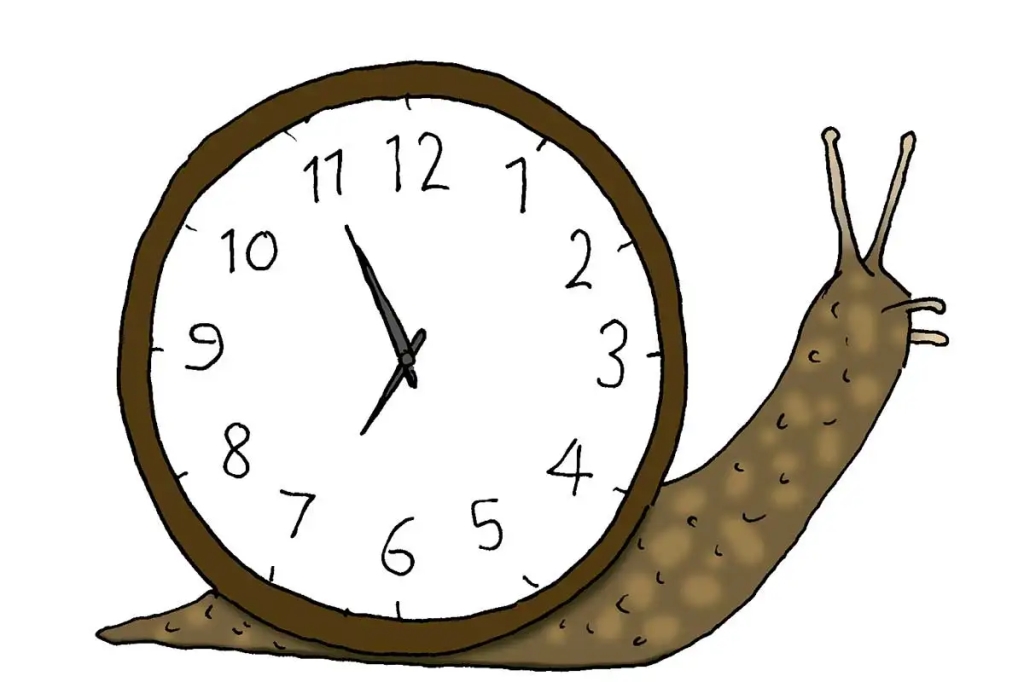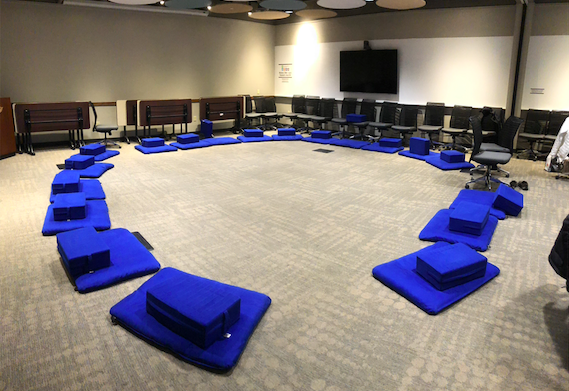Do you see patterns?
Do you do anything with them?
Patterns have a way of inviting themselves into our lives. Well, I guess I can only speak for myself. And they certainly do find a way to creep into my life, as a series of signs that conjure up a pattern which, progressively, pushes me to act on them.
This year, a key pattern emerging is about slowing down, inviting ‘slow time’ (le temps lent).

These are the signs that (my girlfriend would say) ‘the universe’ sent me over the past year:
- The wonderful experience of ‘Time to think‘ through a Never Done Before expertly hosted by Rachel Kochany – which has become one of my favourite ‘formats’
- The incredible discovery of the book ‘Wanderful‘ (by David Pearl) and its secrets of slow time when going on a walk – a peerless gift that Nadia offered me
- The experience of Unhurried conversations, which really makes a difference in the way people show up and leave their judgment at the door
- My shrink, confronting me with the fact that my high pace is great and serving me in many ways, but also standing in the way of being a better parent and human being here and there
- Getting increasingly comfortable with silence in groups, and letting others find their groove through it, which tends to unlock tongues, reflections and actions…
- Reading the book ‘The things you can see only when you slow down‘ which resonated very strongly with me for all its wisdom

These signs started forming this pattern about the slow time and slow pace, adding new layers on a rich canvas that was thick with some existing practices:
- My meditative practice – generally about 20 minutes a day of pure bliss, even though I’m still leaning into the beginner app Headspace
- My craving for and desire to provide ‘dedicated attention’ (one of the 5 love languages) which is all about slowing down and tuning fully to our better half
- The active listening skills (particularly ‘paraphrasing’) that I put in practice in my facilitation and collaboration work
- Being in the present moment, a true gift that both of my parents have sown in me from a young age, to my delight and utmost gratitude
- The appreciation of the ‘slow food‘ movement that started in Italy
- And more…
All these signs are indeed… not just signs.
As a collection, they offer a pattern that strongly, relentlessly, invites me to slow the freak down.

What is made possible with going slowly?
Going slowly is invaluable.
Its greatest nuggets -to me- are these:
Slowing down helps us observe better
When we rush forward, engaging in an ‘optimisation / productivity’ race, we are going through life with a very functional lens: everything has to serve a function.
Nothing wrong with that per se.
Except: it can push us to focus a little too much on that goal of ours, as opposed to whatever is there, already present or emerging.
Slowing down invites us to take in the scenery, the ‘information’ that is out there in our environment, in so many ways, and to be fully present with it. Still without losing sight of our goal.
Everything is information as Thomas Lahnthaler keeps saying… and we don’t see that information if we are putting all our attention towards one goal.

Slowing down helps us appreciate nuances better
Let’s leave the environment aside for a second. Let’s just scrutinise an interaction we might be having with someone. Slowing down invites us to gather specifically all the nuances of that interaction.
The body language (posture, facial movements, physical tuning to each other, or lack thereof).
The tone.
All that is being said, word for word.
All that is not being said, and carries sometimes even more weight.
Slowing down makes us more apt to read the interaction more fully, more meaningfully.
Slowing down puts a premium on relationships, as opposed to results

When we are rushing for efficiency, productivity, our objective, we focus on the results. Not (necessarily) on the relationship. And yet the magic is in the relationship, in the community.
Relationships are key to solving today’s problems, and turning tomorrow’s challenges into opportunities. Because collaboration is, first and foremost, about people, how they connect, how they build psychological safety, trust and create conditions to make magic together.
Slowing down gives us a better chance to go the distance
As a fractal reflection, the longest living life forms are the ones that are not super fast and buzzing. Microorganisms such as endoliths, glass sponges etc. are all pretty nimble and slow or immobile species, but they beat every other species in the lifetime race. Isn’t that worth a think?
By slowing down, we are better connected to the environment, and are not using our resources as wildly as when we are rushing. No stress. Pure bliss. Sustainable bliss.
Slowing down is in fact the more efficient way to go further, deeper, faster
What is better:
Rushing into a hole on the road? Or taking the time to avoid that hole? What goes faster? What is more economical? What is more enjoyable?
Slowing down helps us take micro steps ahead and open opportunities to stop and think carefully and strategically.
Not only that. By chunking progress into micro steps, slowing down helps us process all that information that’s available, and to embed our learning. Think about reading a book and ponder: what is more effective?
- Reading 5 non-fiction books in a row in a matter of a couple of weeks and hoping for content to stick in our brain?
- Or taking time to annotate each book, harvest our notes and factor ‘actionable points’ into our regular practice? And perhaps covering only 1 or 2 books in that same period?
I think you know the answer to what is likely to stick more and turn into a changed practice.
The same phenomenon is at play with slowing down for everything we do. And just so it’s clear: I’m not inviting all of us to slow down everywhere, all the time. Being fast has a lot of advantages. Let’s just make sure we slow down enough to be fully present with what is happening, what we are doing, who we are talking to, what we are thinking and feeling, what we are noticing about others and the environment around.
And let’s face it, isn’t it simply more enjoyable, or even perfectly blissful, to offer our full focus and experience a liberation from the distractions, notifications, urgency buzzes and alerts that invite themselves way too often in our life?
How ‘slow time’ can help us in facilitated collaboration?
If slowing down is an agreeable premise, how can we invite more slow time and space in our collaborations and gatherings?

Here are a few ideas of formats and tactics with groups – which tend to also help share air space more equitably by the way.
- Invite everyone to gather their thoughts for a moment, even just a minute (à la 1-2-4-all)
- Use non verbal formats to slow things down (Spiral Journal, Drawing Together, embodied exercises)
- Invite everyone to sharpen their senses and their capacity to observe (What So What Now What and again Spiral Journal are excellent ways to do that)
- Use a talking stick or object to force people to listen more attentively, and to relax for the fact that everyone can get to talk this way
- Go one step further and host an unhurried conversation and watch the magic of uncensored talk
- Go one step further still and create proper Time to Think
- Play with silence, build our own tolerance for silence, and see what it does to us and others in the group – and do it again to stimulate their confusiasm about silence
- Take a group along a short breathing exercise, or even a small meditation
- Send people out on a walk to reflect on something, in a completely different atmosphere, dynamics, pace and focus
- Invite feedback practices to take a pause and open up a moment of reflection
- Reflect on time, time and time again
- Reflect on what we can realistically achieve in the time we are giving ourselves, and help change makers embrace more realism in their quest for change
The possibilities and opportunities with slow time and space? They are endless!
And you know what?
We actually have – and should take – the time to seize them…
One…
Little…
Fleeting…
Moment…
At…
A…
Time…

Related stories
- Time / topics / depth: The Bermuda triangle of sunk expectations around any gathering
- Time, the ever-present elephant in the room of our meetings (1/4)
- Time for comfort HERE and NOW – Time, the ever-present elephant in the room of our meetings (2/4)
- How to get everyone to talk more equitably? Tactics, tips, tricks to tackle a tentacular trap
- Do you suffer from acute ‘meetingitis virtuales’? Here’s some antidote
- Harnessing the power of introverts – a LinkedIn discussion
Leave a comment